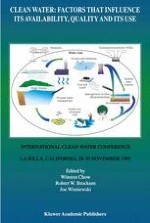1996 | OriginalPaper | Chapter
TVA-Epri River Resource Aid (TERRA) Reservoir And Power Operations Decision Support System
Authors : K. Lindquist, M. McGee, L. Cole
Published in: Clean Water: Factors that Influence Its Availability, Quality and Its Use
Publisher: Springer Netherlands
Included in: Professional Book Archive
Activate our intelligent search to find suitable subject content or patents.
Select sections of text to find matching patents with Artificial Intelligence. powered by
Select sections of text to find additional relevant content using AI-assisted search. powered by
The Tennessee Valley Authority (TVA) and the Electric Power Research Institute (EPRI) have developed software to assist utilities in coordinating power and reservoir operations while balancing multiple objectives. The INTEGRAL project consists of a Decision Support System (DSS) and a Power and Reservoir System Scheduling Model (PRSYM). The DSS, as tailored to the TVA power and reservoir system, is the TVA-EPRI River Resource Aid (TERRA). TERRA is a decision support system that integrates tracking, display, and modeling tools. TERRA provides historical, current, and forecast data to users at several locations to help resolve problems in operation, forecasting, and planning. Graphical displays are featured for individual power plants and reservoirs and on a system-wide basis. TERRA tracks constraints that affect operations and flags non-compliance. Constraints consist of flow, dissolved oxygen, and temperature limits for regulatory compliance, recreation, lake improvement, and special operations. Numerical models may be run from TERRA to predict water temperatures and flows at selected power plants to aid in reservoir operations to comply with thermal limits and minimum flow requirements. TERRA uses a geographic information system (GIS) background map of the Tennessee River Valley. The TERRA software is adaptable to other reservoir systems by changing the GIS background map and reconfiguring other system features.
